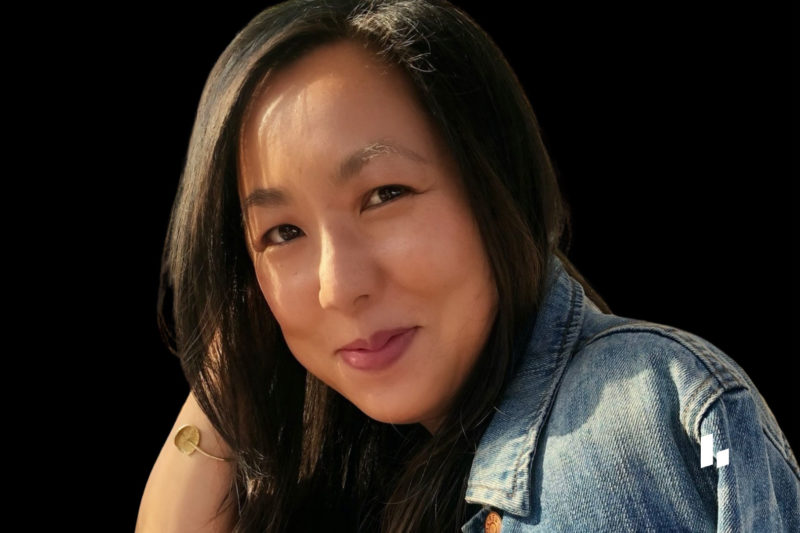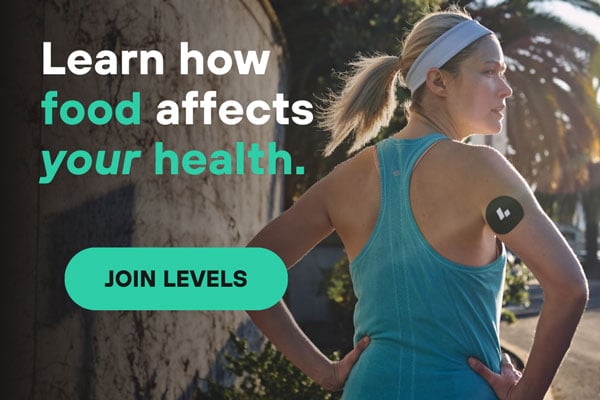Member Profile:
Who: Celia Chen, 49
Where: Los Angeles
Time with Levels: Six months, on and off
Most Useful Takeaway: Even though sushi spiked her blood sugar, she discovered that making minor adjustments to her meal led to a more even glucose response, so she could still enjoy one of her favorite meals.
1. What was your health like before Levels?
I thought my health was better than average. I was the person in my friend group who went to her annual wellness exams, maintained a healthy weight, never got the flu, and had no chronic illnesses. Everything I was doing was considered “healthy.”
People in my life always commented about how much energy I had. I was always busy with work and travel with an attitude of “work hard, play harder.” So, I don’t think I knew how much strain I was putting on my body. Over time, I started having minor but noticeable issues ranging from seasonal allergies to bloating and breakouts.
It wasn’t until I was leaving a big corporate job that I went in to get all my bloodwork done while I still had terrific insurance. The results showed that my A1c was elevated at 5.9%, which was shocking to me. My doctor told me not to eat so much sugar and refined carbs or drink soda. My response was, do you really think I drink soda?
2. What made you want to put a CGM on your arm?
Frustrated by the lack of action from traditional healthcare providers, I turned to my friend, Dr. Molly Maloof (a Levels advisor). I remember telling her: “I’m hitting a wall with my primary care, and I don’t know what to do. This is what my blood sugar is, and I’m concerned. My doctor has no advice for me.” She told me, “Put a CGM on your arm to find out what is happening. You can’t fix something you can’t measure.”
Even as someone who works in the health and wellness space, I didn’t know what drivers affected my A1c and the importance of metabolic health. The fact that my doctor offered no course of action made me want to take matters into my own hands. I followed all the top integrative doctors (Dr. Sara Gottfried), leaders in metabolic health (Dr. Casey Means), health coaches, and nutritionists to puzzle piece it together. As a brand marketer, I am used to building engaged communities around education, so I felt compelled to share my journey on Instagram (@celiawchen) and provide the essential information lacking in my network. More importantly, I want to sound the alarm because more than one in three people have pre-diabetes, and I was one of them.
Learn more:
3. What surprising things did you notice about your eating habits when wearing the CGM?
A big learning was: we don’t always eat because we are hungry. Logging my food into the Levels app and keeping the two-hour window between meals pristine helped me understand the direct impact of those food choices. It also helped cut down on mindless snacking. If I was within two hours of eating my last meal, and my blood sugar was not low, I was clearly not hungry. If I found myself standing in front of my fridge, maybe it was because I was bored or stressed. If I was “starving,” all of a sudden, it wasn’t because I needed food. My body was feeling the crash from a big glucose spike. Recognizing this helped me identify some of the behavioral patterns that triggered me to eat.
Another ah-ha moment: My go-to meal when I wanted to “eat clean” was sushi because I was eliminating gluten and dairy. One evening, I ordered my favorite sushi and watched my blood glucose skyrocket. I thought, “Oh, this is a sad day. Rest in peace, Sugarfish.” I watched sweet potatoes, bread, tortillas, and fruit all create big glucose spikes and crashes, so it was apparent that starches, especially on an empty stomach, weren’t working for me.
Once you understand what’s going on in your body, you realize how easy it is to game the system. So, I’ll still eat sushi, but I’ve changed it from a weekly choice to an occasional indulgence. Additionally, I have some hacks that make it less damaging. I’ll have a salad before, but I’ll ditch the carrot dressing, which is full of sugar. My order will lean toward sashimi or a roll with avocado (since the good fat blunts the spike). With the CGM, I know how my body reacts, so minor edits can help me eat one of my favorite foods.
4. What non-food things did you find affected your blood sugar control?
I love data, so I started to wear an Oura ring to connect how my blood sugar and sleep affect each other. That night I ate sushi, I woke up five more times than usual, and the sleep I did get was not as restful. The reverse happens, too, with my sleep quality affecting my blood sugar. If I take a red-eye flight, it is much harder the next day to manage my blood sugar, even if I eat the same foods.
What’s been most beneficial to me is fasting. After a 5-day fast, when I restricted calories and stayed in ketosis the whole time, my fasting glucose went down from 90 to 75. By continuing to fast intermittently with a window of 12 to 14 hours (vs. 16 hours which I find too taxing), I’ve kept my blood glucose more even throughout the day. To do it, I moved dinner up a little earlier and avoided snacking before bed.
5. What results have you seen while wearing the CGM?
I’m a marketing executive that builds early-stage start-ups, so I’m constantly sprinting toward big milestones. If I spend my days crashing in the afternoon and on the verge of taking a nap, I can’t do what I do best. Using Levels, I’ve optimized my health in so many ways. My energy levels are soaring, and I have newfound clarity and improved cognitive function in the mornings while I fast. My skin is glowing, and my gut issues have disappeared, probably due to the reduction in overall inflammation in my body. My A1c has dropped to 5.4% after 4.5 months of using the CGM and making minor edits to my diet, lifestyle, and fitness.
When I started my CGM journey with Levels, I was focused on course correcting my dietary and lifestyle choices to improve my metabolic health, but I realized very quickly that it was much more than that. This is not about deprivation and what I cannot eat. If we want to live an extraordinary life and thrive, the only way to achieve that is to have the health, resilience, and the sustained energy to do the things we love with the people we love.










